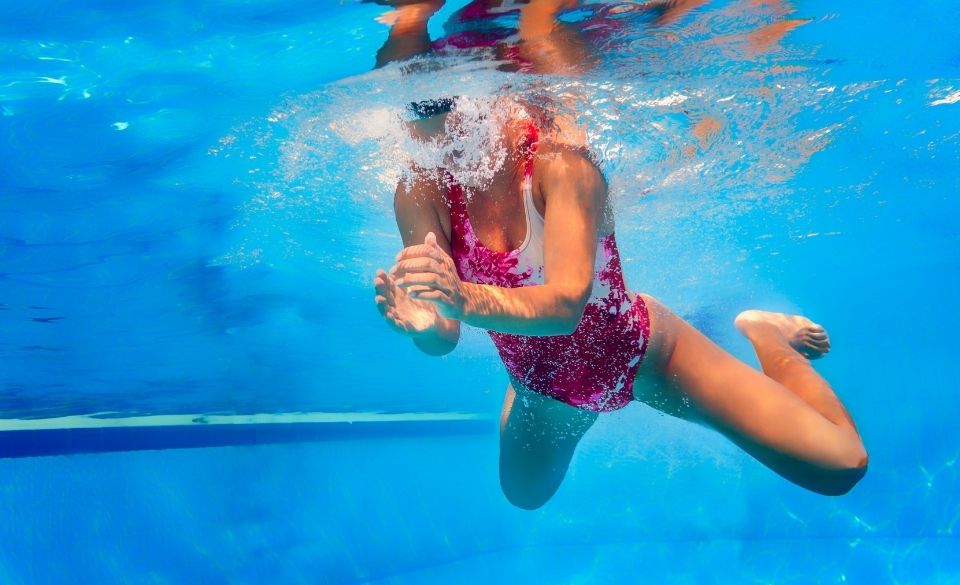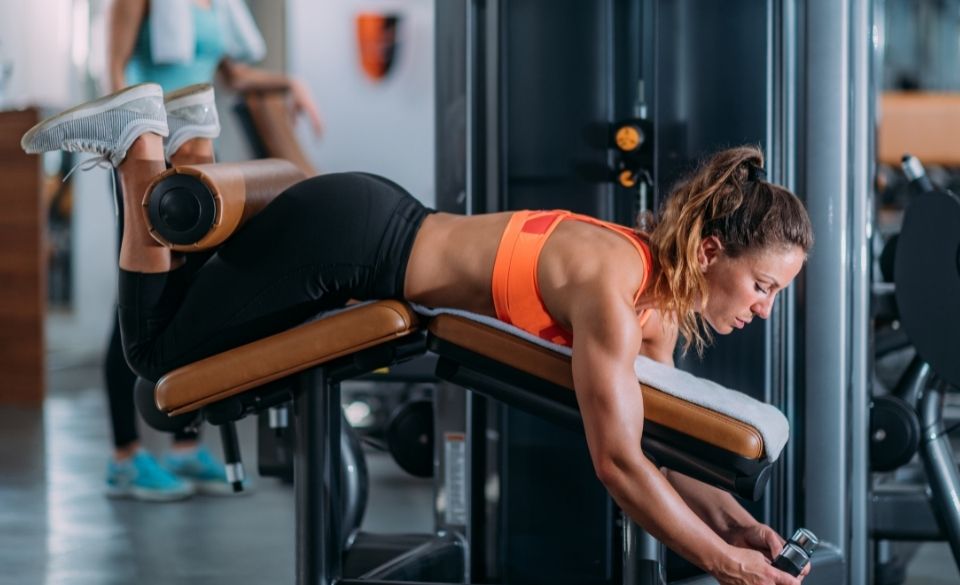
Swimmers Knee Injury – Symptoms, Prevention & More – UPDATED 2022
Page Contents
Since elbow and shoulder injuries are most common in swimming, most people overlook the thought of injury in another area. This is because most people think that the knee isn’t used in swimming. However, this is completely wrong.
One of the most common injuries outside of the shoulder and elbow region is in the knee area. This injury is called “swimmers knee”. However, even though you may not have experienced this before, swimmer’s knee is more common than you think.
This form of injury mostly affects breaststroke swimmers. However, it can affect other swimmers with poor technique.
So, if you want to learn more about swimmer’s knee, keep on reading.
Swimmers Knee Symptoms – What Are They?
Swimmers knee symptoms are often associated with similar symptoms to that of knee injuries from walking, running, cycling and other sports.
The most common symptoms are swelling, reduced mobility, and inflammation around the knee. Other symptoms like redness can develop, however, this is not so common.
Generally, the most common symptom you will get is pain and discomfort that will worsen during physical exercise and not just swimming.
Swimmers Knee Injury – What Causes it?
A swimmers knee injury (also called breaststroker’s knee) is often caused by stress placed on the inner ligaments of the knee. This is usually because the force needed during the kick phase of breaststroke swimmers is high.
Because so much force and repetitive motion are needed during the kick phase, soft tissue and ligaments can get affected by overuse and poor technique.
A study in Canada by the Candian swimming association found that more the 10% of swimmers in their programs suffered from orthopedic complaints. Out of the 261 (2,496 total) swimmers that complained of injury, 10% of those suffered knee pain. Then out of that 10% of swimmers that complained of knee pain, 70 were breaststroke swimmers.
The most common part of the knee that swimmers tend to injure is the medial collateral ligament. This ligament is used to stabilize the inner part of the knee through its range of motion.
So, it is not uncommon for breaststroke swimmers with poor technique and strength around the knee to suffer from inflammation of the MCL.
If the swimmer is lacking strength around the knee joint (hip adductors and abductors) it will lead to instability of the knee during each kick or stroke.
How Long Does it take to Heal?
The good news is swimmers knee can heal relatively quickly. Typically repetitive strain injuries in the knee will take anywhere from 8-12 weeks to heal. Although it depends on the seriousness of the injury and if the swimmer continued through the early stages of the injury or if they rested.
Some of the treatment for swimmers knee includes physiotherapy, massage, and acupuncture. However, other forms of rehab can include functional movement testing, active release, ultrasound treatment, and athletic therapy.
However, once the knee has started to recover it is important to deal with the underlying cause of the problem. That can be technique, overuse (training), and lack of strength. Then following a plan to correct these issues can result in the injury not coming back again.

What are the Best Swimmers Knee Exercises?
There are many exercises to strengthen the surrounding knee muscles. These include:
– Half squats
– Calf raises
– Hamstring curl
– Leg extensions
– Straight leg raises
– Side leg raises
Other exercises specifically for swimmers include:
– Cable leg curls
– Bodyweight Squats
Both of these exercises can help strengthen the surrounding muscles of the knee without placing too much stress on the knee.
Since multiple muscles work together during the flexion and extension of the knee it is important to not forget them. That means it is important to strengthen the hamstrings, quadriceps, and hip/glute muscles as well. More specifically you should focus on the muscles:
Quadriceps
Rectus femoris
Vastus lateralis
Vastus medialis
Vastus intermedius
Hamstrings
Semitendinosus
Biceps femoris
Semimembranosus
By focusing on the above muscles, you can help relieve the stress placed on the knee during swimming.



